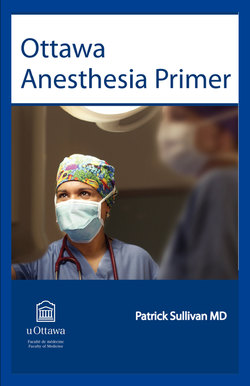Читать книгу Ottawa Anesthesia Primer - Patrick Sullivan - Страница 27
На сайте Литреса книга снята с продажи.
Obesity:
ОглавлениеThe perioperative risk of complications is related to the degree of obesity, which is defined by the body mass index (BMI). Comorbidities commonly associated with morbidly obese patients include CAD, hypertension, OSA, and insulin resistant diabetes mellitus.34 The World Health Organization (WHO) obesity classification is listed in Table 3.5.
Morbidly obese patients may be difficult to ventilate using positive pressure with bag-mask ventilation (BMV). They are prone to rapid desaturation following induction of general anesthesia (see Fig. 9.1). The rapid desaturation is due to an increase in oxygen consumption as well as a restrictive lung disorder and is accompanied by a reduction in total lung capacity, functional residual capacity (FRC), and expiratory reserve volume. As a result, the FRC can fall below the closing capacity, resulting in small airway collapse even during normal ventilation in an awake obese patient. The onset of general anesthesia results in a further fall in the FRC.
In a small percent of patients with severe obesity, respiratory failure may result from central hypoventilation causing Pickwickian Syndrome. The clinical features of this syndrome include somnolence, hypoxia, hypercapnia, pulmonary hypertension, cor pulmonale, and polycythemia. The risk of aspiration is increased due to low gastric pH, increased abdominal pressures, and increased gastric volume. The obese patient may also face issues with difficult intravenous access, altered drug metabolism, and difficulty with mobilization. Anesthetic techniques, such as epidural analgesia, may be technically challenging to perform. The risk of epidural failure in the postoperative period is increased in obese patients secondary to catheter movement and dislodgement resulting from abundantly mobile and lax soft tissues.
